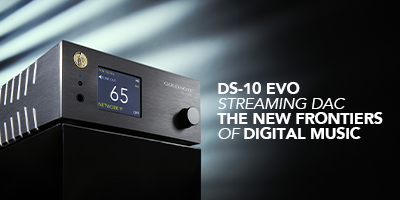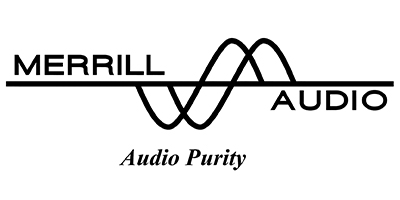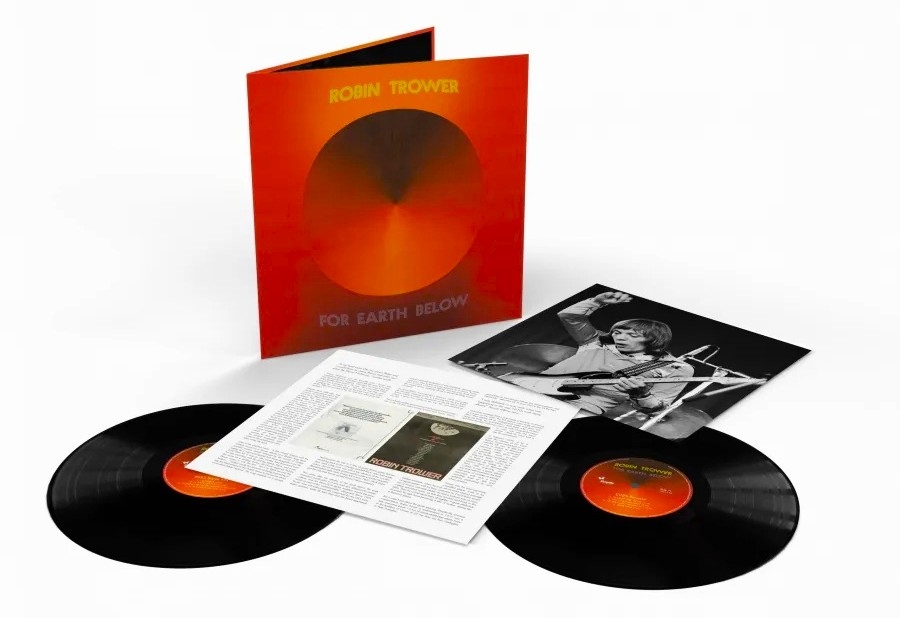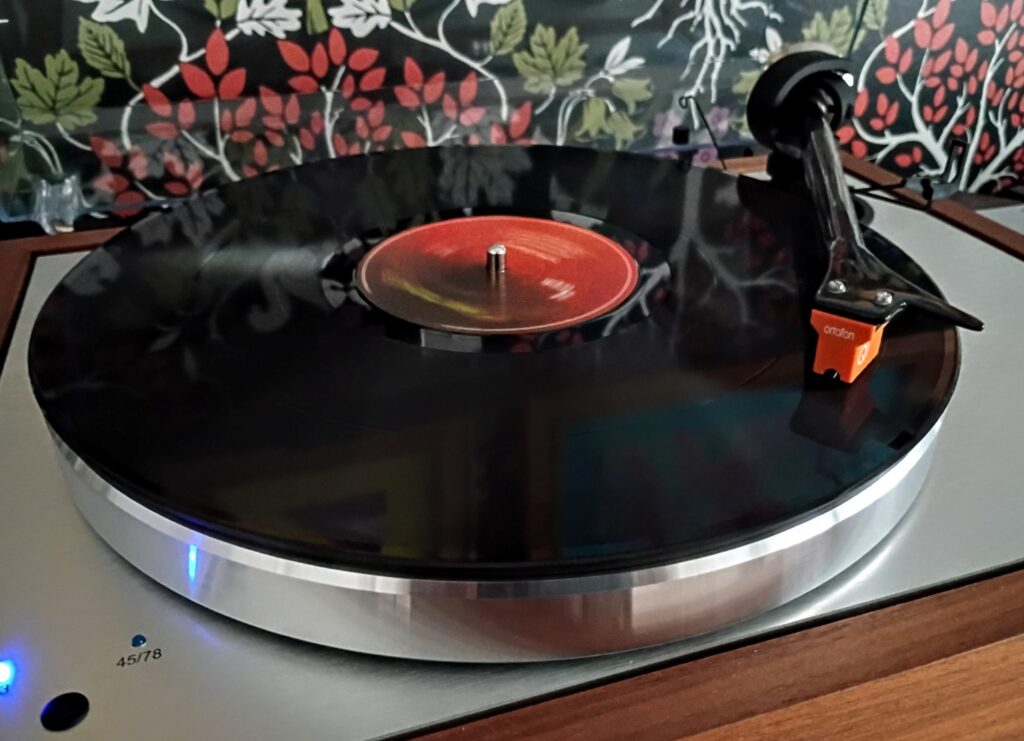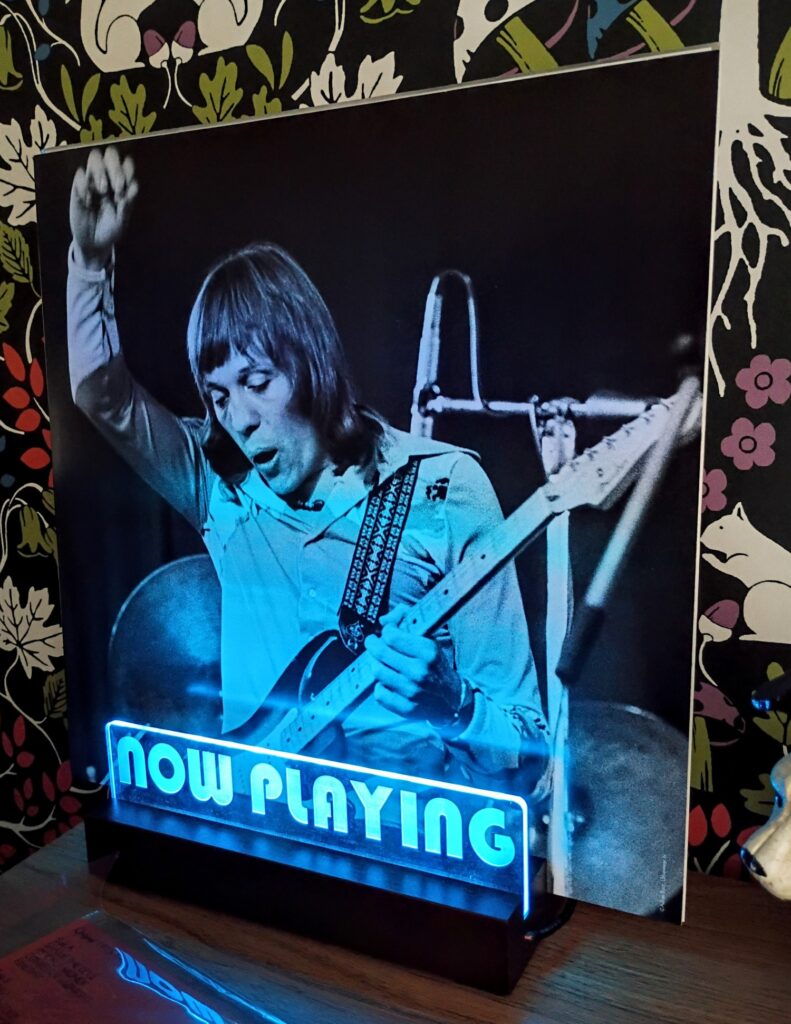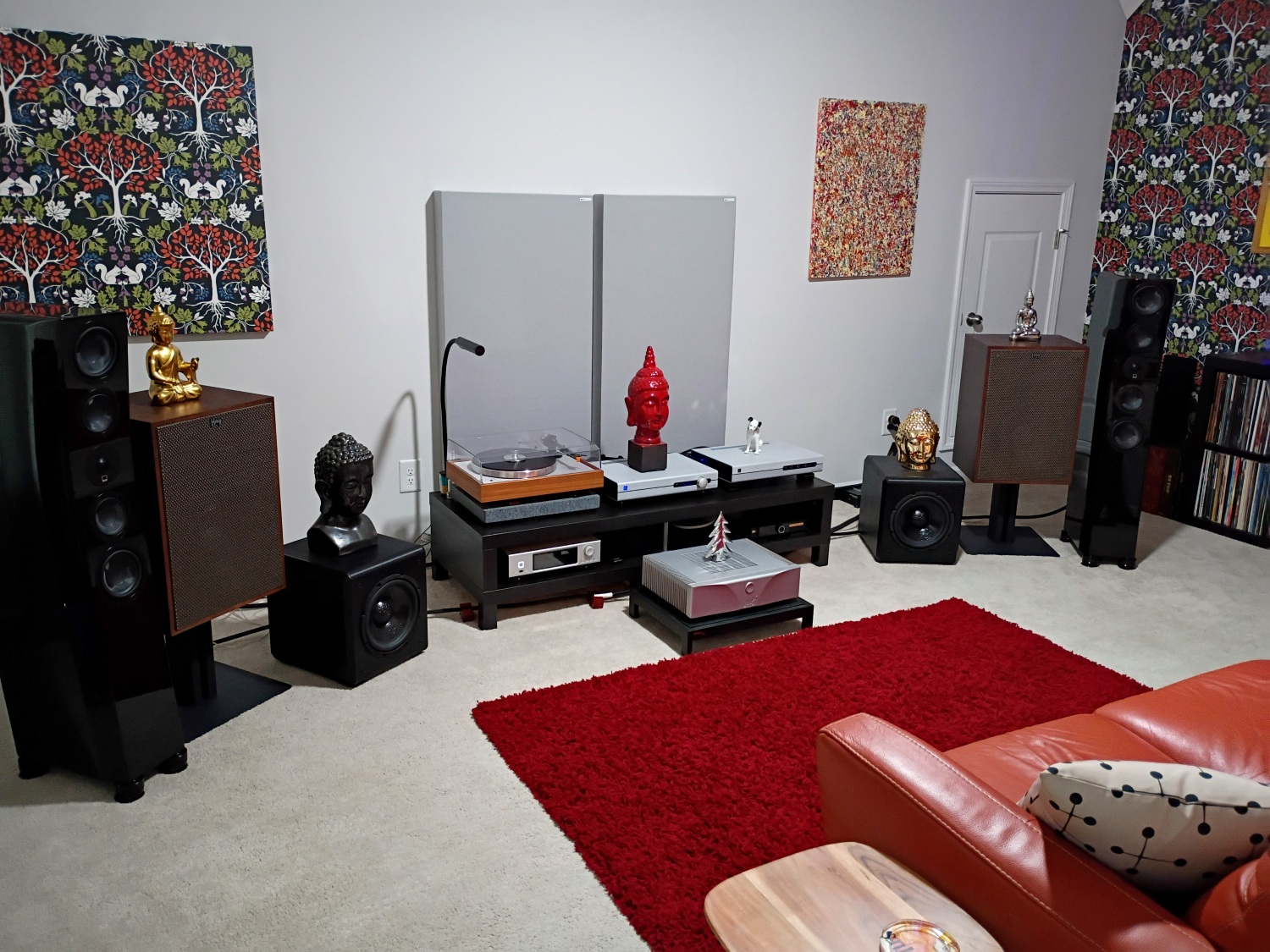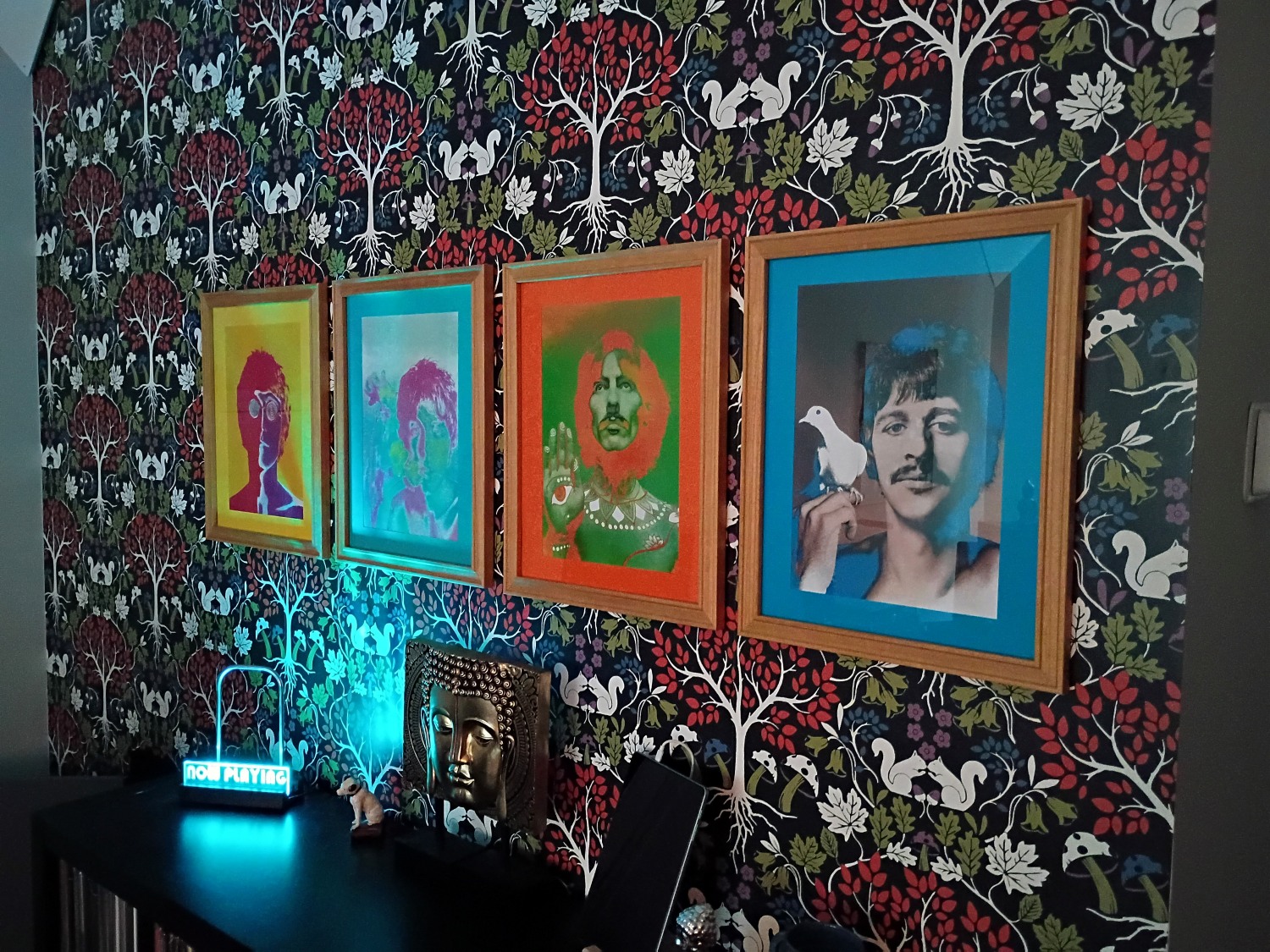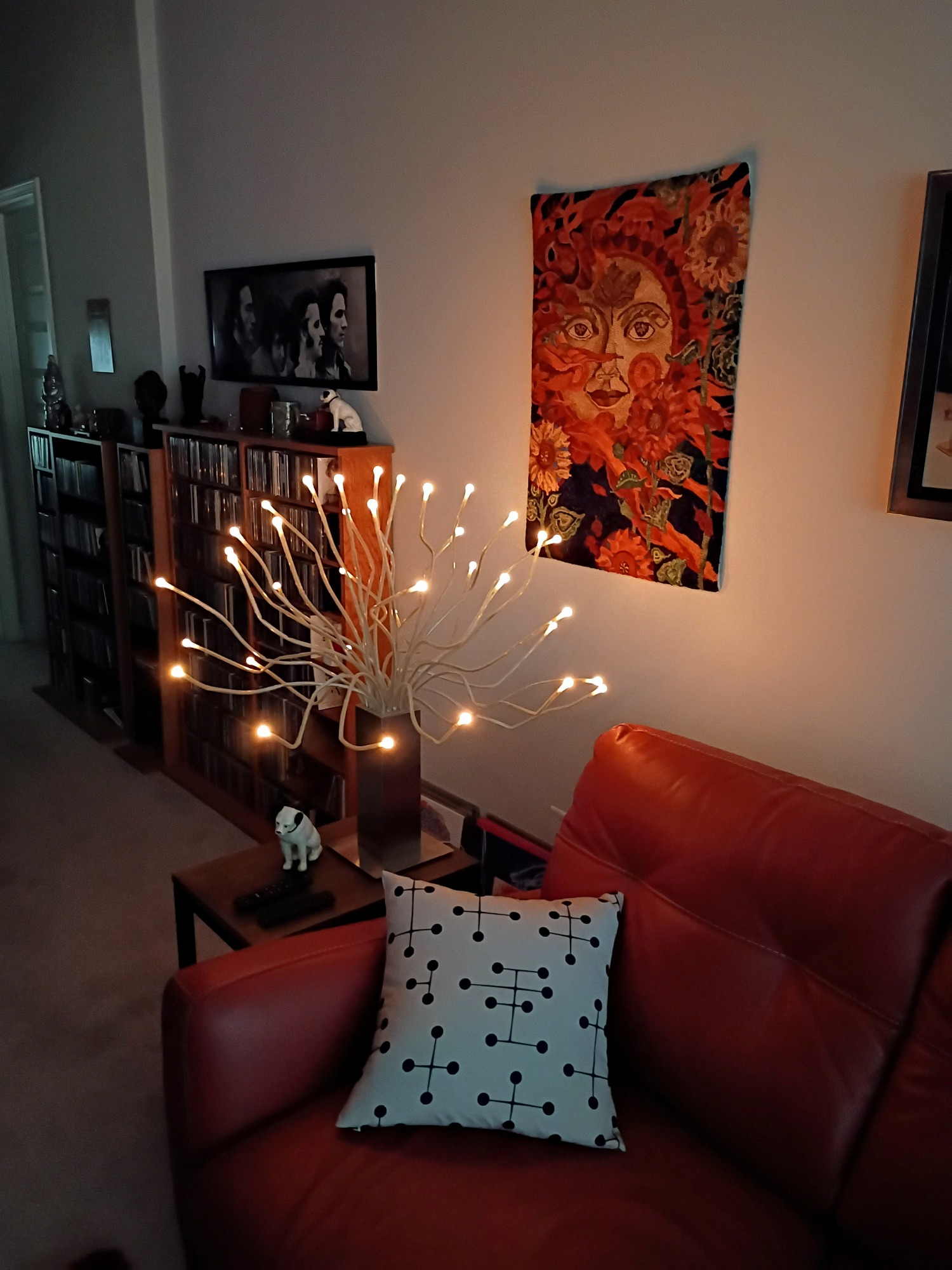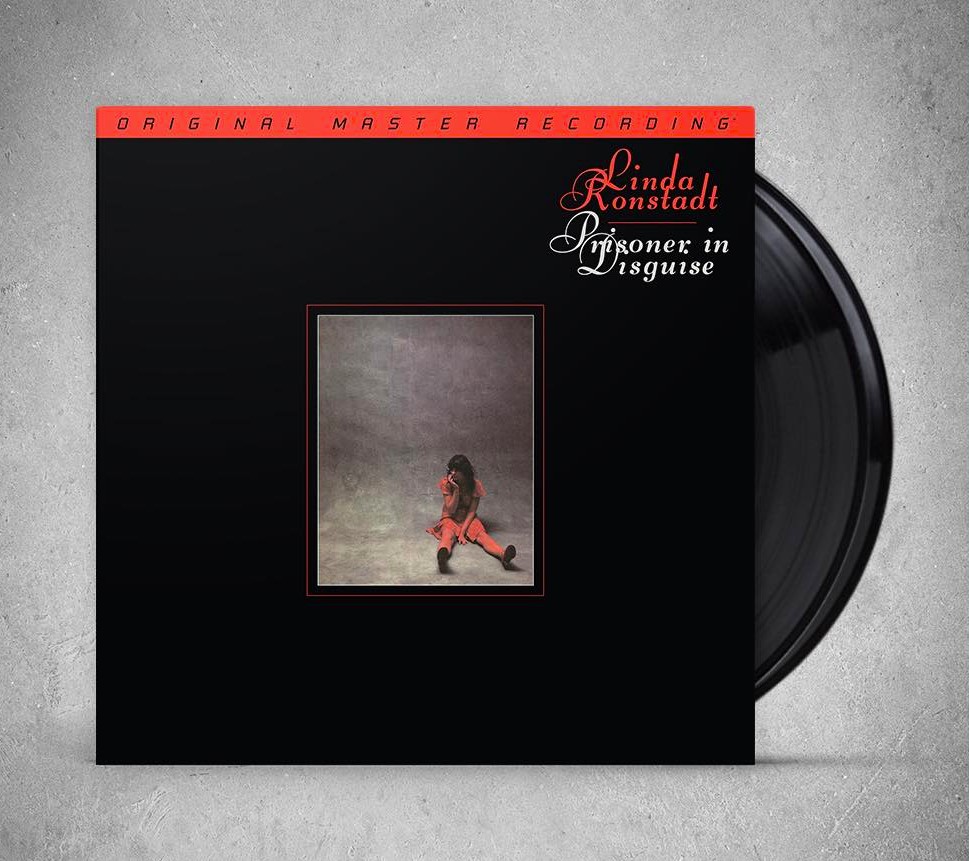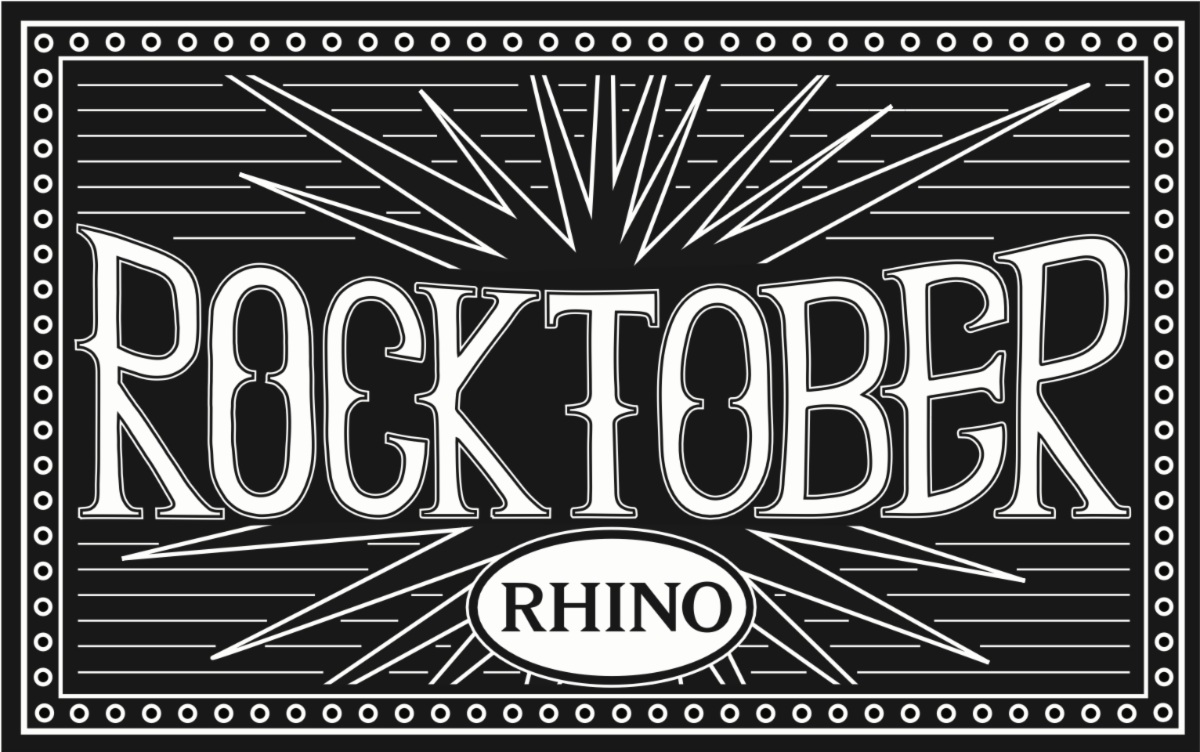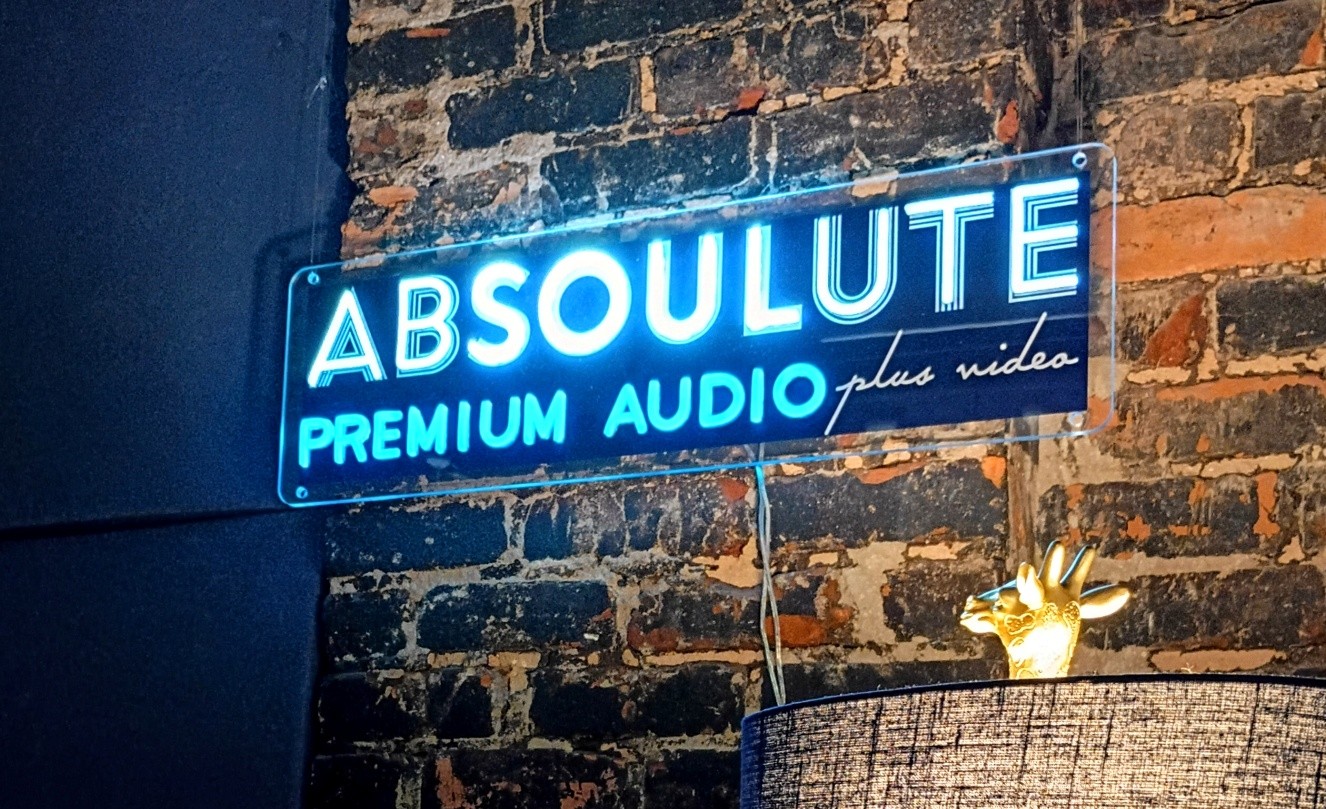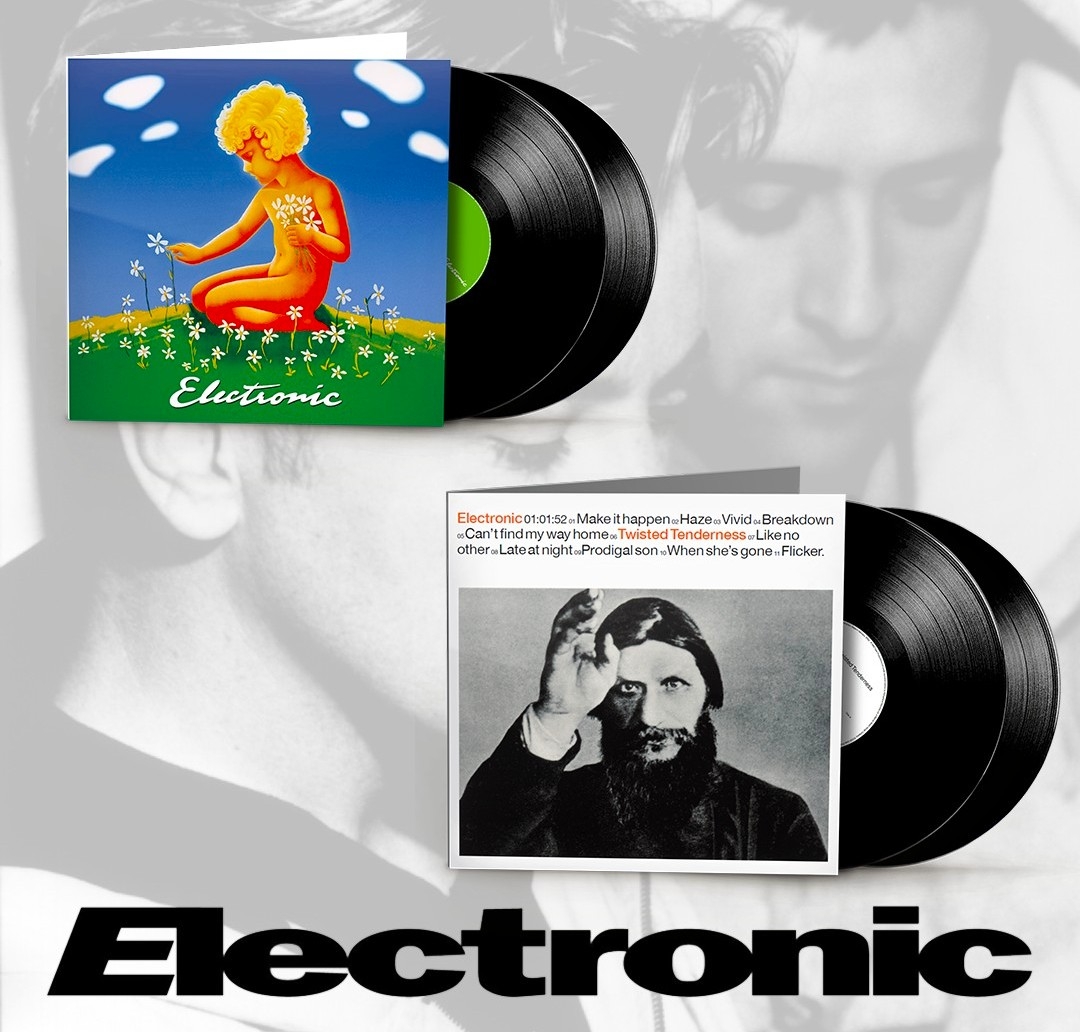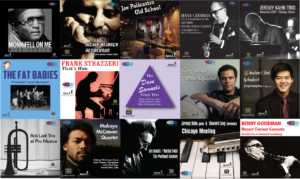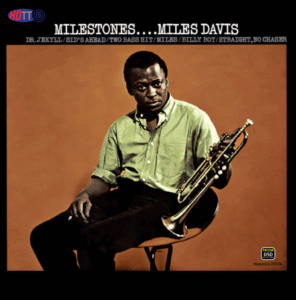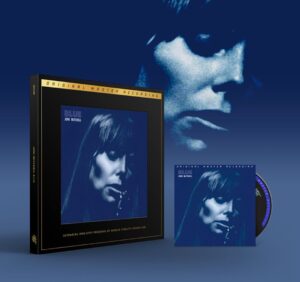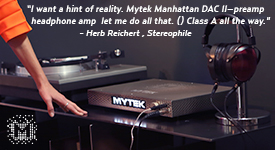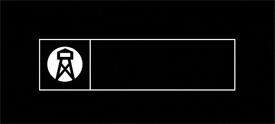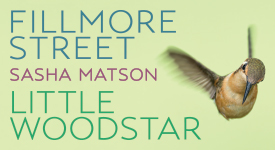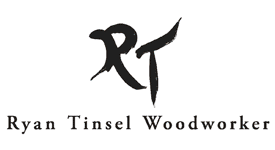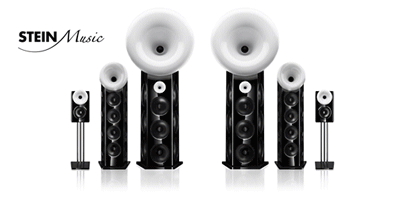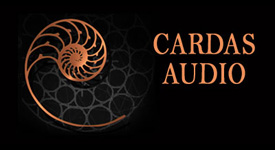Chrysalis Records continues their celebration of the legacy of legendary guitarist Robin Trower with the latest installment in the series, For Earth Below, 50th Anniversary Edition. Originally released in 1975, For Earth Below was his third studio album, and followed on the heels of his commercial and critical breakthrough Bridge of Sighs by only ten months. Bridge of Sighs represented a watershed moment for the artist, and while For Earth Below was somewhat less adventurous than its predecessor, it was no less vital, and even achieved a higher level of commercial success. For Earth Below found Robin Trower serving a generous portion of his personal distillation of raw-edged, blues-drenched rock, while seemingly continuing to hover in the almost inescapable shadow of Jimi Hendrix. For Earth Below, 50th Anniversary Edition is being offered in multiple, multi-disc options, including deluxe LP and CD sets.
The 180 gram 2-LP set features the original album remastered on the first LP, while a new stereo mix by Richard Whitaker occupies the second LP. Both LPs were mastered by Phil Kinrade with lacquers cut at half-speed at AIR Mastering in London. No information was supplied regarding the source of the LP pressings, and I couldn't determine it from the deadwax information.¹ The LP set's heavy gatefold jacket features the original album's crisp iconic artwork from designer "Funky" Paul Olsen; the jacket is beautifully finished with a satin varnish coating, and a cool, custom OBI strip highlights artist and technical information. Each LP is inserted in a heavy, printed inner sleeve; the first sleeve features a really cool photo of Robin Trower that was taken from the original album sessions. And both sleeves feature images of the original session master tape boxes and promo posters from the initial release. An entertaining and informative essay from British music journalist, author, and musician David Sinclair (Rolling Stone, Billboard, Classic Rock, Q Magazine, Kerrang!) chronicles the events surrounding the album's creation, along with interesting interview reminisces from both Robin Trower and drummer Bill Lordan.
The 4-Compact disc set is supplied in a hardcover, casement style book jacket that replicates most of the style elements of the LP set; it also includes David Sinclair's superb essay. The four CDs are inserted into stylized sleeves with pockets for each disc; the pocket design isn't ergonomically perfect, but it's not as dysfunctional as other similar sets I've encountered. Disc one features the original 1975 album mix remastered, while disc two features the new, 2025 stereo mix. Disc three features an abundance of outtakes and rarities, many of which are previously unreleased. And disc four features a live recording from the Shrine Auditorium in Los Angeles dating from a month following For Earth Below's original release—it's also previously unreleased. Surprisingly, the live performances only include a handful of tracks from Trower's then new album!
You can pre-order both LP and CD versions of For Earth Below, 50th Anniversary Edition from Chrysalis Records webstore HERE; both will also be available at many brick and mortar locations like your favorite independent record store. Streaming and digital downloads will also be accessible from most online services.
Robin Trower, For Earth Below, 50th Anniversary Edition, (2) 180 gram LPs, $43.99 MSRP, or (4) Compact Discs, $52.99 MSRP
Bridge of Sighs brought Robin Trower both critical and commercial validation; it reached number 7 on the US Billboard album charts and achieved gold sales status driven by heavy album-oriented rock radio airplay. But the pressures of success and incessant touring also threatened to splinter the group; drummer Reg Isidore and bassist and vocalist James Dewar were constantly at each other's throats. Trower made the difficult decision to fire Isidore to restore the peace; he then hired drummer Bill Lordan, who came from a recent stint with Sly and the Family Stone. Lordan's high-energy performance style wasn't dissimilar to that of Jimi Hendrix drummer Mitch Mitchell, and Lordan had even jammed with Hendrix on occasion. Hendrix had even considered Lordan for his transitional band when he played Woodstock in 1969. Trower felt Lordan's animated and energetic style would be perfect for his own group's next phase, and James Dewar apparently got along with him quite well. Robin Trower also had an itch to record his next album in the US, where he was convinced he'd get a more well-recorded guitar sound. The trio sequestered at The Record Plant in Los Angeles in late 1974 to begin the sessions for what would become For Earth Below. Matthew Fisher, Trower's former bandmate from Procol Harum, was again called upon to produce the album, and Gary Ladinsky engineered the record.
For Earth Below was released in February, 1975, and even outperformed its massively successful predecessor. Without the support of any singles, the album reached gold sales status in the US and number 5 on the Billboard album charts. For Earth Below was something of a departure from Bridge of Sighs, in that Trower more consistently pursued his love of blues-rock throughout the album's eight tracks. Tunes like the album's opener, "Shame The Devil," "It's Only Money," "Alethea," and "A Tale Untold" clearly show the undeniable influence of Jimi Hendrix on Trower's playing. But also proved that Robin Trower's style was entirely his own, and never derivative—it was more of an homage to Jimi, if anything. Many of the tracks feature Hendrix-inspired solo entrances, none more so than the sprawling title track, "For Earth Below," which has an almost cerebral, meditative quality. Robin Trower had developed his own dazzling style that built on Jimi's legacy without emulating it. On subsequent albums, Trower started moving towards a more mainstream approach, one that loosened his embrace of the blues-based-rock that so thrilled his fan base. For Earth Below would be his last album to crack the US top ten.
Chrysalis has given us the ultimate For Earth Below
By clicking on my name in the header above, you can see the full complement of audio system components I used to evaluate For Earth Below. I run separate digital and analog source systems here, and as I received both the LP and CD sets, I used both my digital and analog systems for their evaluation. The all-analog system used to replay the LPs is tube driven, while the digital system features an advanced music server with world-class digital-to-analog conversion. Both systems have superb synergy, rendering all formats of For Earth Below, 50th Anniversary Edition with impressive dynamics, startling realism, and breathtaking musicality.
I'm a Robin Trower fan from waaaaay back, but I tend to disproportionately focus on his set-in-stone classic, Bridge of Sighs, which has been in fairly regular rotation with me since day one of its release. It'd been a while since I'd actually taken a serious listen to For Earth Below, and I was shocked by how good this album really is in comparison to its predecessor, with many of the tracks leaving me slack-jawed while listening. I'm a big fan of blues-rock, and the fact that For Earth Below moved more headstrong in a bluesy direction didn't bother me one whit—it's the direction he chose after this album that eventually lost me.
Both 180 gram LPs from For Earth Below, 50th Anniversary Edition were superb, with glossy surfaces and little or no groove noise during playback. I dug out my original LP for comparison; it might have been decades since it was last given a spin! And it was bettered in every way by the 2025 remaster, which had greater clarity, an increased level of dynamics, and significantly less noise than the original. The remixed LP was equally superb in terms of its sound quality; while the listening experience was definitely different, I heard nothing that I took issue with. Remixing classic albums may polarize a lot of listeners, but in my experience, it often corrects deficiencies in the originals. Of course, YMMV.
The 4-CD set will definitely please fans of For Earth Below. I'd been given access to the CD-quality digital files prior to the arrival of my review copies, and I added those to my music server and played them through the Aurender digital system. I found the remixed and remastered sound quality of the original albums to be outstanding and very much on par with the excellent LPs. The wealth of alternate takes, outtakes, and rarities—many of them previously unreleased—will be welcomed by fans and collectors, though the sound quality is understandably a bit variable. And the live performance recordings from the tour that followed For Earth Below's release were miraculous, with sound quality that rivaled that of the studio album. Playing the promo CDs upon their arrival yielded the same results through my Yamaha universal disc player—the sound quality was never less than superb!
Final impressions
I developed a love for the guitar playing of Robin Trower all the way back to his early days with Procol Harum. Where his astonishing musicianship on their eponymous debut album offered a thrilling glimpse of what was to come only a few years later. Especially on the tracks "Cerdes (Outside the Gates of)" and "Repent Walpurgis," both of which still show up frequently in my playlists. When he left the band in 1971 to form his own power trio, I definitely started paying much more attention! The energy Bill Lordan brought to the trio on drums made all those Jimi Hendrix comparisons even more difficult to avoid.
Both the LP and CD sets are superb, and if you're only into streaming, the digital files were equally outstanding. I noticed that my local independent record store is advertising each of these sets for pre-order for about $5 less than their MSRPs, so the actual prices may vary depending on the location. You can't go wrong with this reissue package—For Earth Below, 50th Anniversary Edition comes very highly recommended!
Robin Trower
Chrysalis Records
All images courtesy of Chrysalis Records and the author.
¹ The previous entries in the Robin Trower 50th Anniversary series were manufactured at GZ in the Czech Republic. GZ's usual stamped imprint was absent from the lead-out groove areas of the LPs included in this release.

